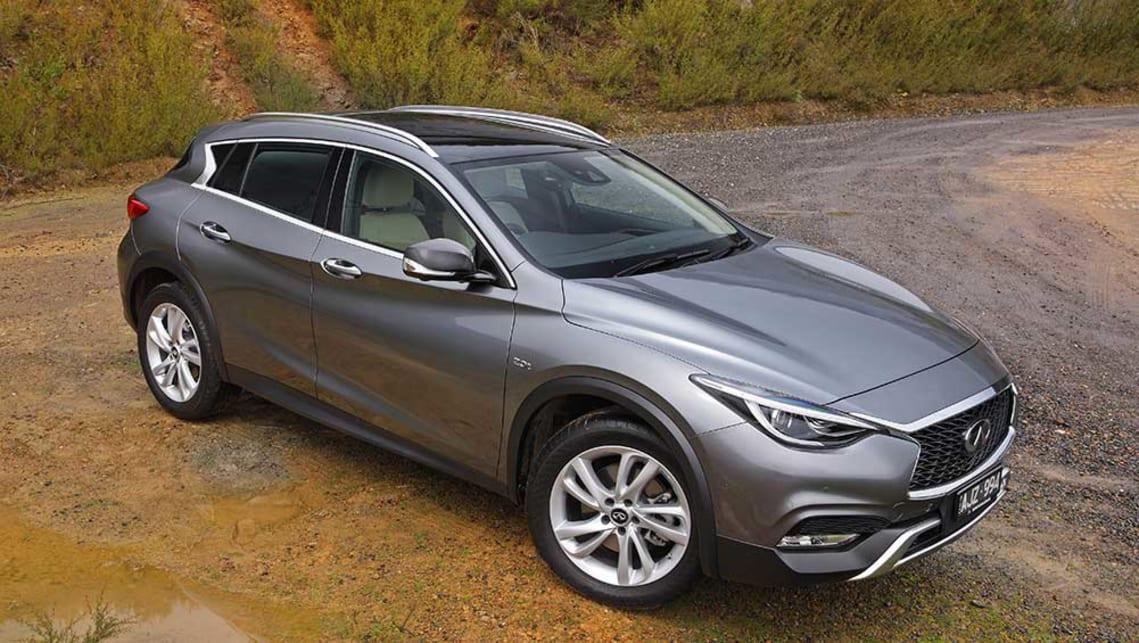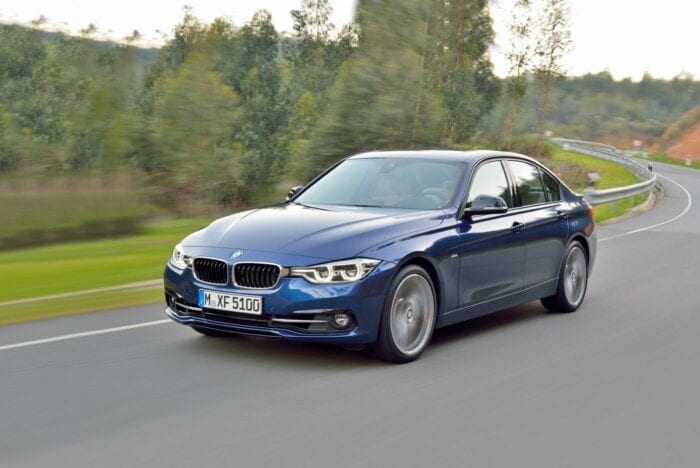
Infiniti QX30 Premium 2016 review
Ewan Kennedy road test and review of the 2017 Infiniti QX30 Premium with performance, fuel consumption and verdict.
The new Infiniti QX30 is based on the same platform as the Infiniti Q30 we recently reported on, but it's 35mm taller and has a more aggressive look. It's part hatchback, part SUV, with a strong coupe touch to its shape. It shares some of its foundations with Merc - the automotive world is a strange place at times.
Interestingly, the Infiniti QX30 for the Australian market is assembled at the Nissan/Infiniti plant in England, which makes sense since they drive on the "correct" side of the road in the UK. However, it still has the turn signal lever on the wrong side for Australia, i.e. on the right instead of the left.
At this stage, the Infiniti QX30 only comes in two trim levels: the 2.0-ton GT with an MSRP of $48,900 and the QX30 2.0-ton GT Premium priced at $56,900. Travel expenses will have to be added, although in today's tough market a dealer may be able to cover some of this to get a sale. All you have to do is ask.
Styling
Although the Japanese Infiniti likes to make its style in design, it is not European, not Japanese, nothing at all, just Infiniti. We love the bold attitude that shows.
The QX30 is almost a coupe in style, not a station wagon. We especially like the treatment of the C-pillars with their interesting angles and trim details.
As befits its off-road ability, this small to mid-sized SUV has plastic skid plates around the edges of the wheel arches. The double arched grille with XNUMXD mesh makes a real impression. The stylish two-wave hood is made of aluminum. The low roofline and C-pillars blend neatly into the dramatic tail.
There was no shortage of looks when passerby shoppers or other drivers saw this car.
Rear legroom is lacking if those in front need to recline their seats for comfort.
The Infiniti QX30 GT Premium has 18-inch five-twin-spoke snowflake design alloy wheels. Low profile 235/50 tires add a sporty and purposeful look.
The interior is upmarket, with premium materials used throughout; beige nappa leather in our Premium test car. Also standard on Premium trim are Dinamica suede headlining and natural wood inserts on the door panels and center console.
Features
The Infiniti InTouch multimedia system found in both QX30 models features a 7.0-inch touchscreen displaying on-board sat-nav and useful Infiniti InTouch apps.
The 10-speaker Bose Premium Audio System with subwoofer and CD/MP3/WMA compatibility sounds amazing. The standard Bluetooth phone system provides audio streaming and voice recognition.
ENGINES
The Infiniti QX30 is equipped with a 2.0-liter turbo-petrol engine with 155kW and 350Nm of torque. It is driven by a seven-speed dual-clutch automatic. It has what Infiniti calls intelligent all-wheel drive, which typically only drives the front wheels. It can send up to 50% of the power to the rear axle to maintain traction on slippery surfaces.
If sensors detect wheel slip, the spinning wheel is braked and torque is transferred to the grab wheel for added stability. Especially useful when driving fast on unfamiliar roads.
safety
The new QX30 is equipped with a long list of safety features, including forward collision warning, automatic emergency braking and sophisticated vehicle dynamics control. There are seven airbags, including a knee bag to protect the driver. The little Infiniti has yet to crash test, but is expected to receive a full five-star rating.
Driving
The front power seats are eight-way adjustable, which can be further adjusted using the four-way power lumbar support. Heated, though not cooled, front seats are part of the package.
The front seats are pleasant to the touch and provide decent support for normal driving. High cornering power would probably leave them wanting a bit, but that's hardly how this Infiniti is being treated.
The rear seats are a bit lacking in headroom due to the coupe-style roof. Rear legroom is lacking if those in front need to recline their seats for comfort. My six-foot figure couldn't sit behind me (if that makes sense!). Three adults in the back are possible, but it's better if they're left for the kids if you're making trips of any length.
We appreciated the glass roof, which could be well shaded in 30+ degrees of Queensland sunlight during our test period. Come in the evening, we really appreciated the view of heaven.
The boot size is a good 430 liters and is easy to load. The seat folds 60/40 when you need extra room.
The Premium model has a ski hatch, but not the GT. Due to the placement of the subwoofer under the trunk floor, there are no safe areas underneath it.
The extensive use of sound-absorbing materials reduces the penetration of wind, road and engine noise and ensures a pleasantly quiet ride over long distances. Another addition to the luxurious feel and sound is that the audio system includes Active Sound Control, which does its best to suppress external audio frequencies if they enter the cabin.
Grip is sufficient, but we would have preferred more steering feel.
The performance of the turbo-petrol engine in our Infiniti QX30 test was sluggish on takeoff, but good when the car fired up. It's in the economy settings. Switching to sport mode certainly improved the situation, but it spent too much time in lower gears, reaching around 3000 rpm even when driving on main suburban roads. Heaven knows how this affected fuel consumption, so most of the time we were stuck in E mode.
Even in economy mode, the QX30 consumed 7-8 l/100 km, which, in our opinion, should have been lower. The city reached 9-11 liters.
The seven-speed dual-clutch automatic transmission works well and, unlike some other models, moves easily at very slow speeds in difficult parking conditions.
Shift paddles allow the driver to shift manually, or the system can give you a full manual mode.
The intelligent cruise control worked well, and stopping and starting the engine was almost imperceptible.
Handling is quite acceptable, although not quite in the class of sport utility vehicles. Grip is sufficient, but we would have preferred more steering feel. Obviously this is a personal matter, but add it to the list of things you want to try in your personal road test.
Most of our trip was done on typical off-road terrain - that is, on ordinary paved roads. We drove it on dirt roads for a while, where the ride remained good and the car was quiet.

